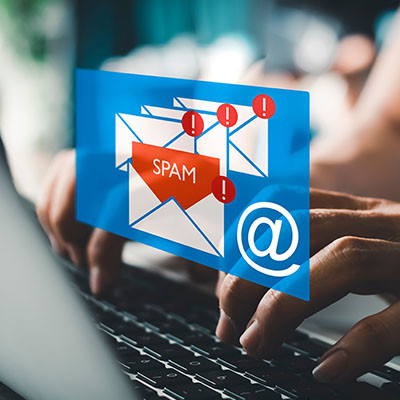Datalyst Blog
Slicing Through Spam Cuts Back on Saltier Threats
We’re all well aware of the annoying nuisance that is junk email. In fact, we’re all so used to it, that it’s pretty easy to dismiss it as an irritating fact of life, when it still has the potential to be very harmful.
As a business owner, you need to be aware of the threats that lurk in your employees’ inboxes, because spam, and phishing attacks in particular, are the leading attack vector of some of the worst cyberattacks out there.
Spam Does More Than Clog Up Your Inbox
If each employee spends an extra five minutes every day sifting through junk mail to get to important messages, then eliminating spam can have an immediate and measurable impact on your business. It might not be massively significant, but multiply five minutes by the number of staff, and assume that some people might get bogged down for longer when it comes to managing their inboxes, and you can reap the benefits from freeing your staff from that.
Unfortunately, that’s only the surface of the spamdemic. If you’ve gotten this far in thinking “I hardly even notice the junk anymore, I just delete it,” then you are like most of the rest of us. We’re all so used to it that we can just sort of dismiss it—if something looks spammy, it gets trashed. Simple as that.
It’s almost therapeutic in a way. I wonder how many of us take that glorious second sip of coffee in the morning while tapping the delete key, and we don’t even realize that we’re using it as a zen-like moment of self-care.
All joking aside, you are absolutely right in thinking that a little junk mail seems benign. It’s a fact of life, and it has been for decades now. If you have an inbox, you get spam.
But that’s (partially) why spam can be so dangerous. When your defenses are down and you treat a threat casually, you are more likely to get tricked. And we’re not just talking about you—multiply the risk by the number of employees that you have.
Email is the Leading Attack Vector for Most Cybersecurity Threats
Look at it this way: every business uses email. Every single business. Email is used to validate account information, like your bank, your merchant account, your software, and literally every other service that you use.
For most businesses, nearly every employee has an email address and an inbox full of information, a contact list with other emails, and so many potential weaknesses in their defenses.
Emails are virtually anonymous. A threat actor can easily mask their identity and hide behind an email, and use tools and services to look legitimate when they really aren’t.
Finally, email-based attacks simply work. People fall for them at an alarming rate. After all, it IS the leading entrypoint that most major cyberattacks use.
Four Steps to Protecting Your Organization from Email-Based Cybersecurity Threats
Invest in Some Protection
Talk to your trusted IT consultant (or give Datalyst a call) and ask about email security. There are tools that can be deployed that help protect your inboxes, using intelligent monitoring tools and global threat intelligence and even AI to prevent the vast majority of spam and dangerous threats. The key is getting these tools implemented properly, and making sure they don’t clash with your existing IT security. It’s also worth mentioning that your existing email platform likely has administrative tools that we can use that help mitigate some issues as well.
Provide Staff Training
This has finally started to become more and more widespread, and for good reason. Your employees are your biggest weakness when it comes to your cybersecurity. When an organization takes the time to train employees on what to look for, it will greatly reduce the risk of falling for a cyberattack. Since email is one of the most popular attack vectors, and everyone has a company email, your entire staff should go through cybersecurity training that includes how to spot a phishing attack, how ransomware works, how to detect and report scams, and how to ensure that their work is secure.
Provide Ongoing Phishing Simulation
Once everyone knows what to look for, the best way to cement that knowledge is by subscribing to a service that sends “fake” phishing emails to your staff every so often to try to catch them off guard. These phishing emails are safe, they don’t cause any harm if someone falls for them, but management can get a report on who fell for the trap, and most systems can even follow up with the user to let them know that they made a mistake and reeducate them on what to look for.
Audit Your Cybersecurity Regularly
Depending on your business, you may be required to do this yearly or even quarterly based on regulations you have to follow, but even if you aren’t required to, it’s a good idea to have your network audited to detect where your weaknesses are, and develop a plan to harden them. It doesn’t have to be a major project or crippling expense either—establishing a plan and working towards an end goal gradually (as long as you get help prioritizing tasks) will go a long way to keep your business safe.
It’s Time to Take Email Security Seriously
Not only is spam a huge time-waster, it’s downright dangerous. It all starts with an audit of your existing IT and cybersecurity, and then we can help get your business on the right track to stay protected from the growing number of online threats. Give us a call at (774) 213-9701 to get started.
Comments

